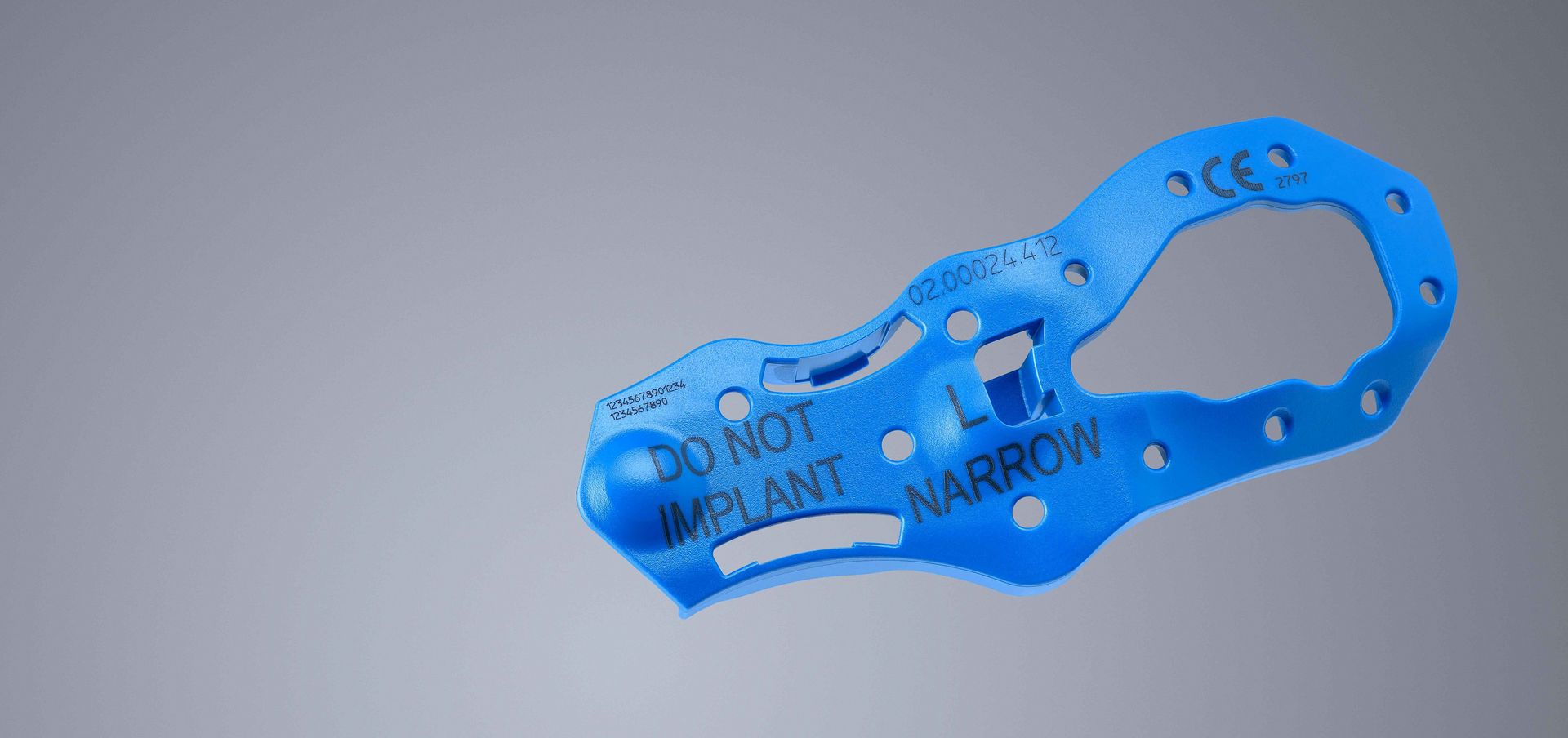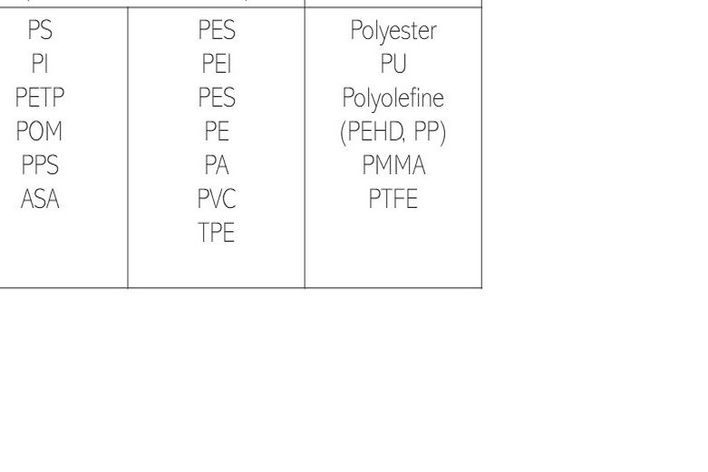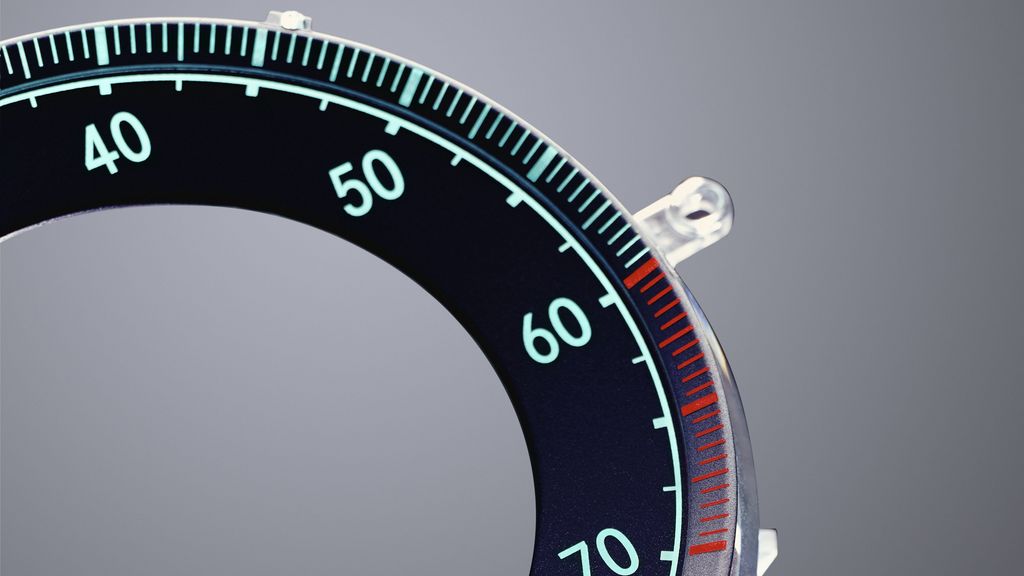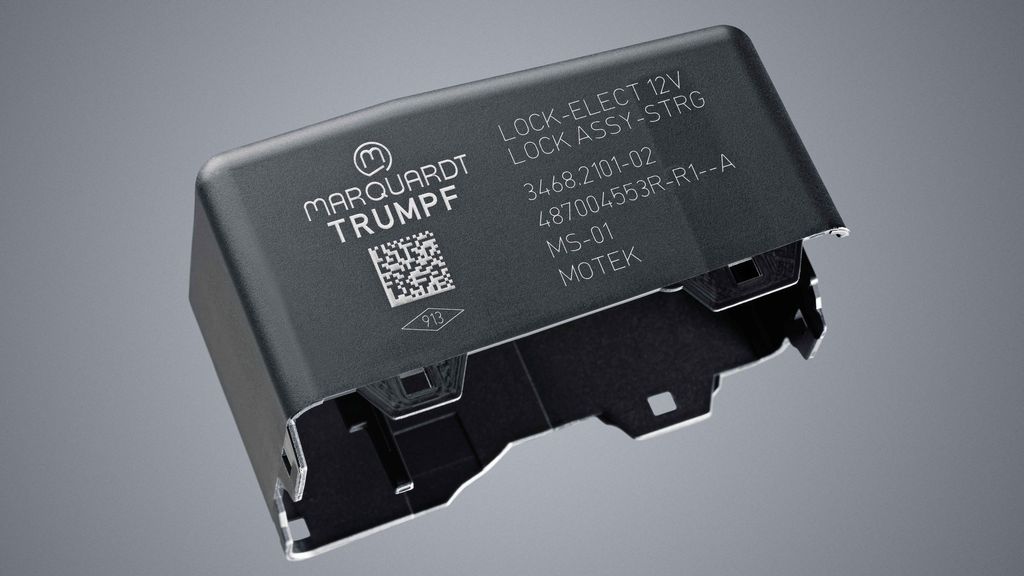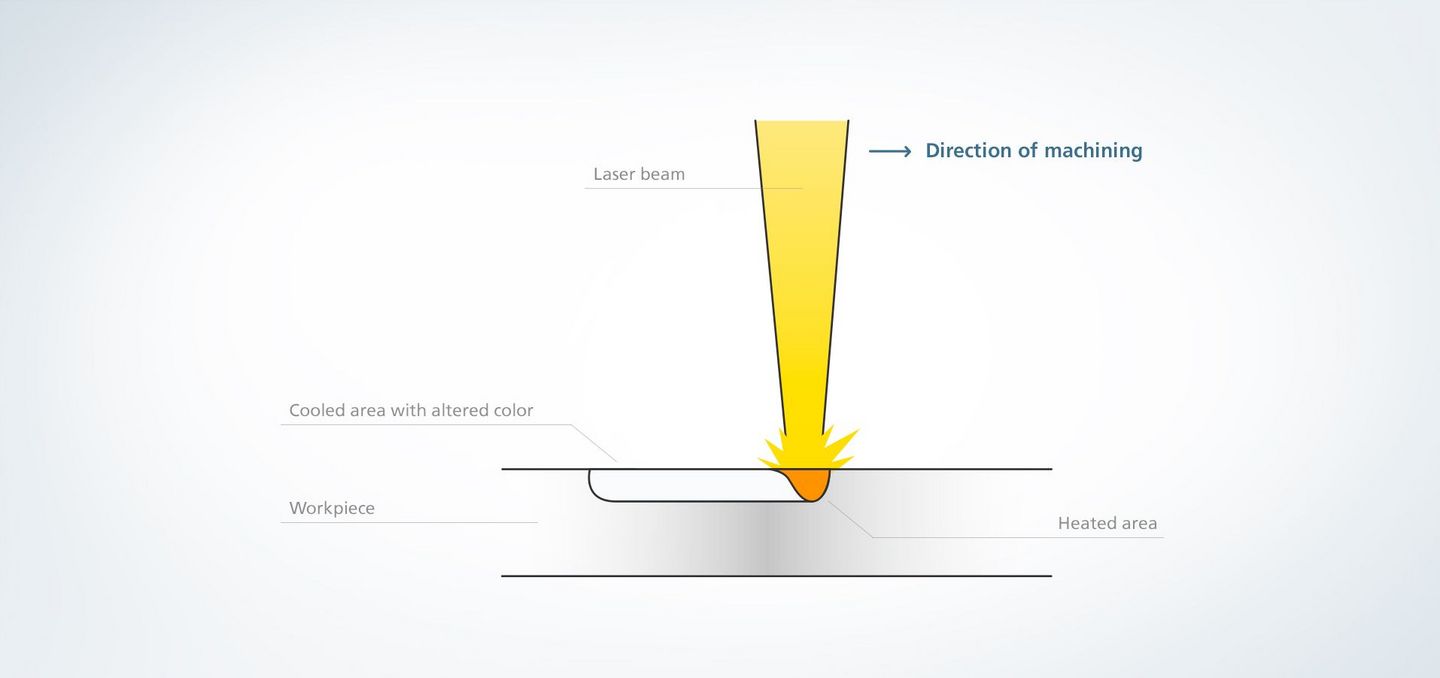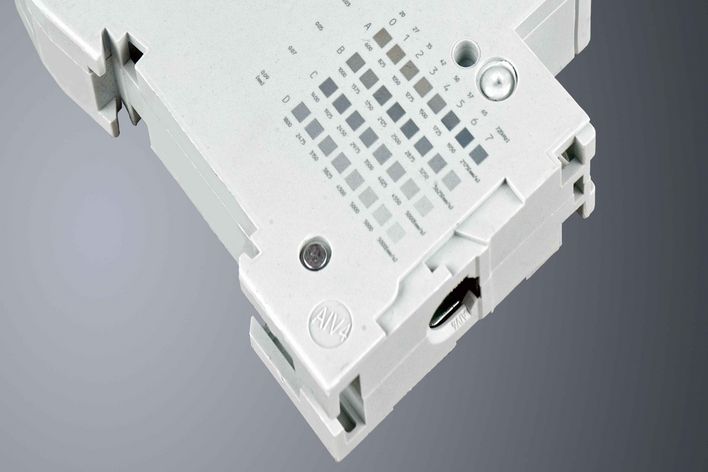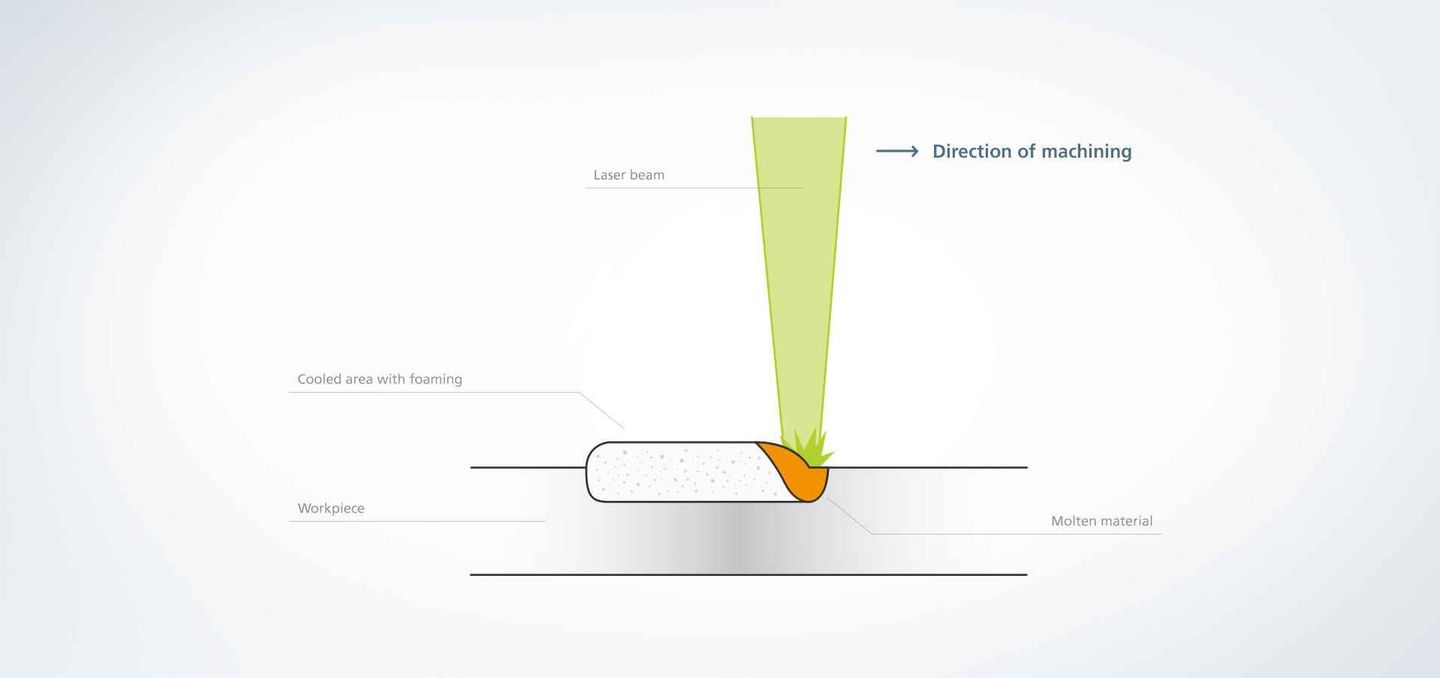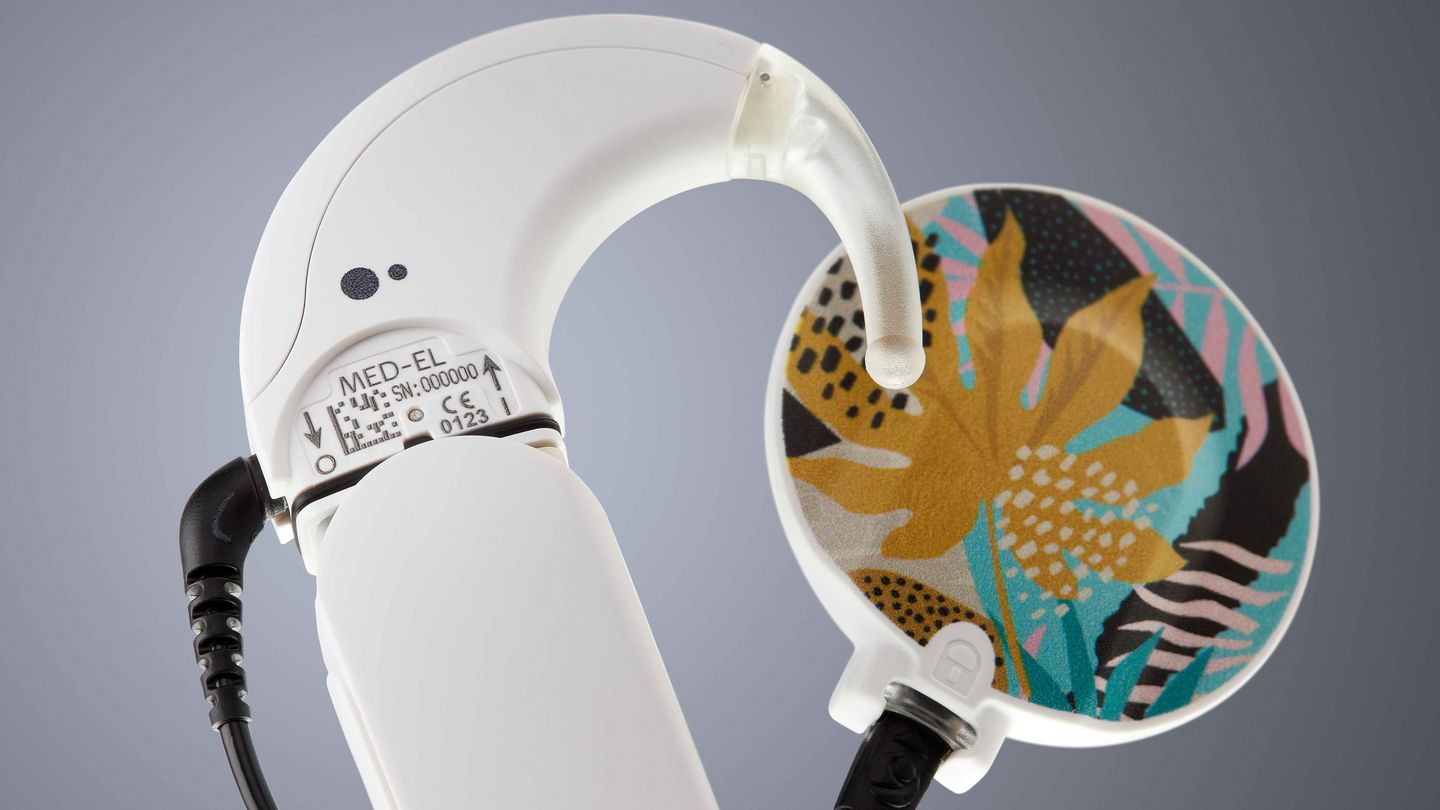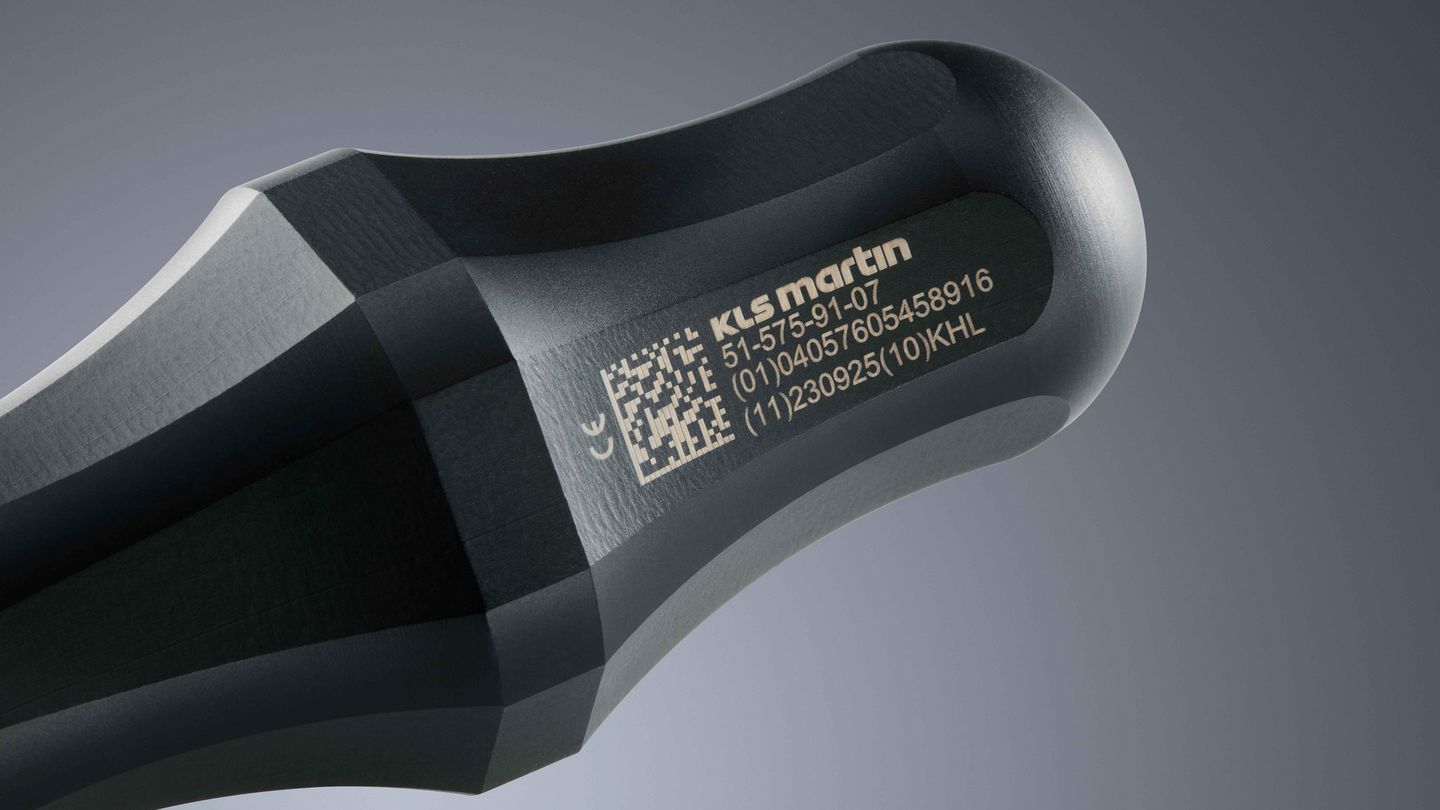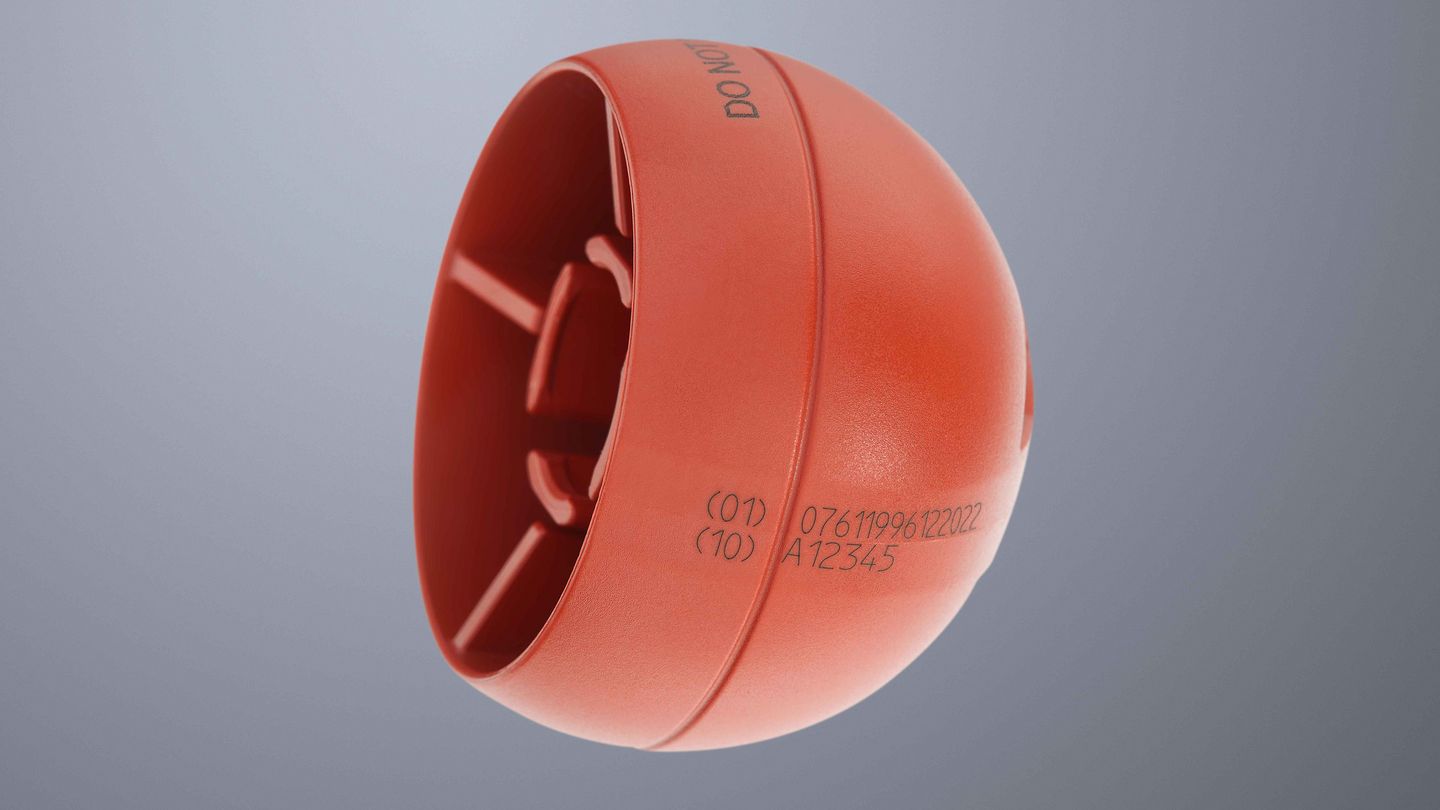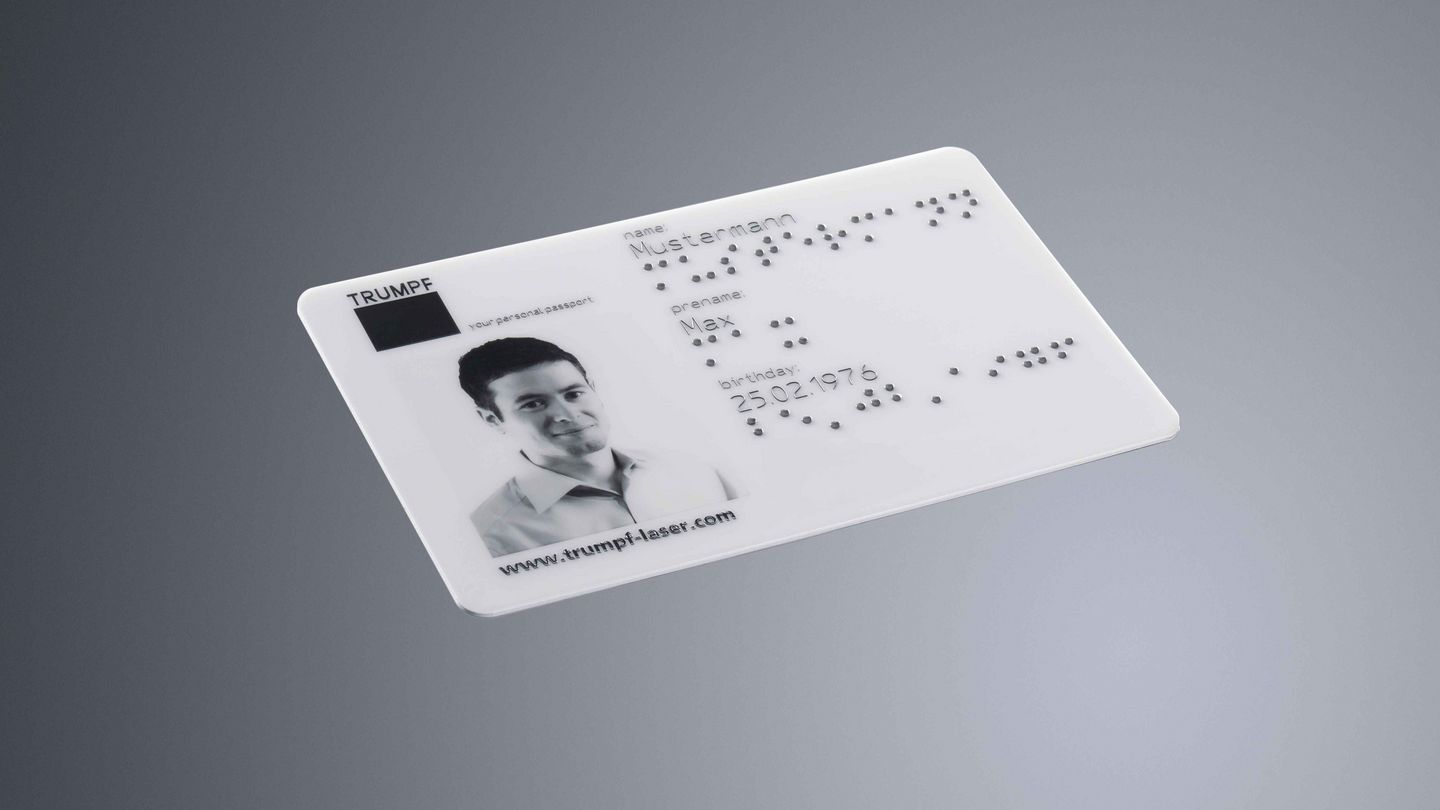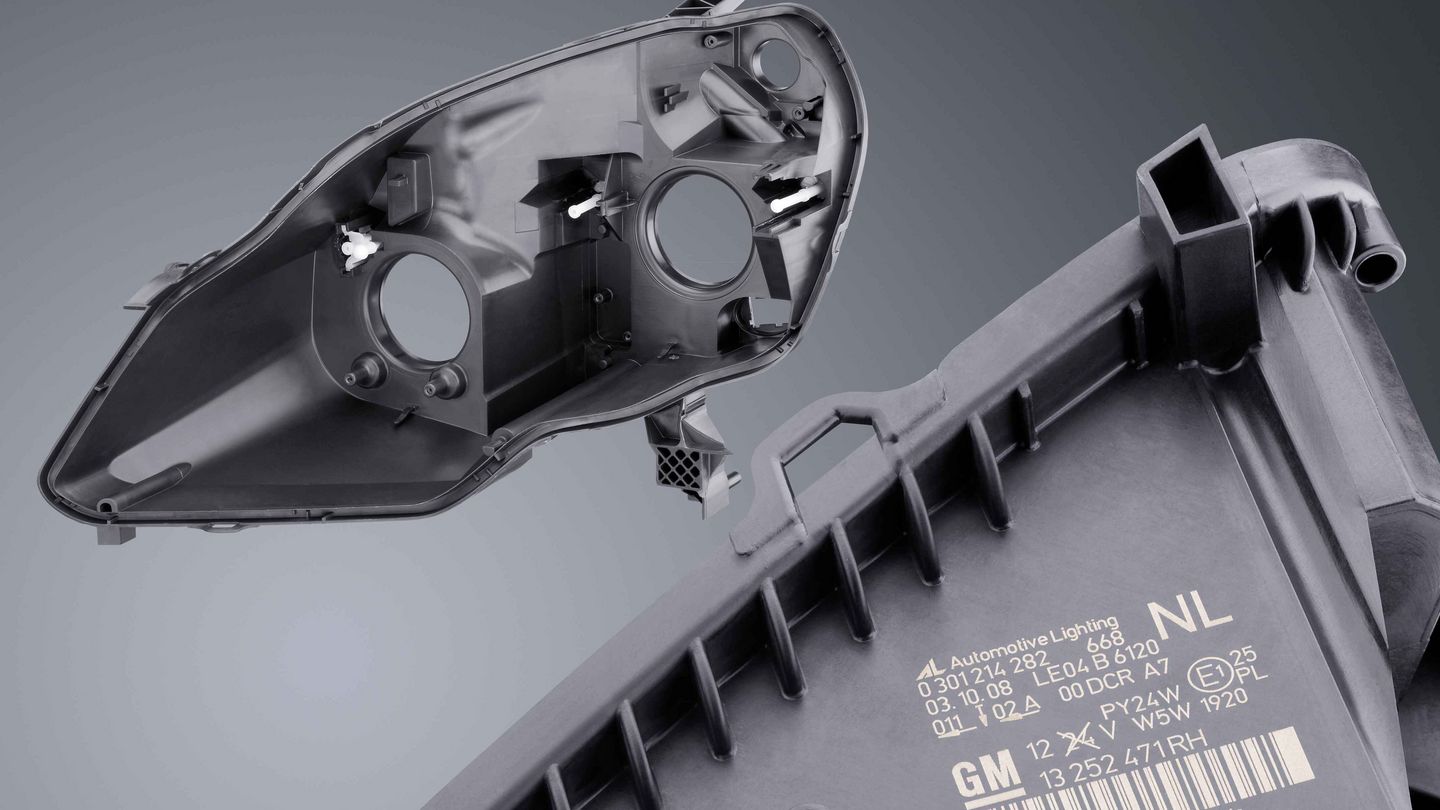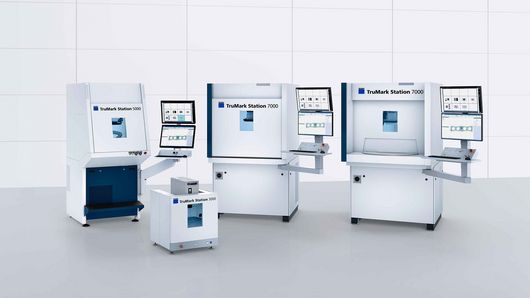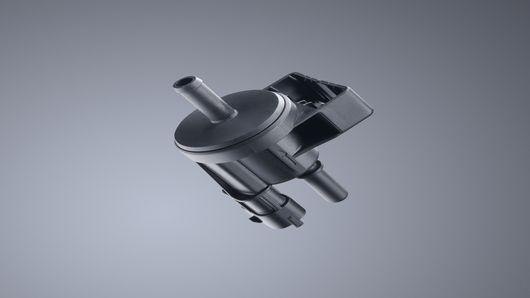Short-pulse lasers achieve good results with a range of marking types depending on the plastic, the laser wavelength and additives used. To achieve high legibility and marking quality, it is recommended to mix laser-sensitive additives into some industrial plastics. The properties of the plastics remain largely unaffected.
Laser wavelength plays an important role in the marking of plastics, depending on the application. Using frequency-doubled (532 nm, green) or tripled (355 nm, UV) solid-state lasers extends the range of plastics that are easy to mark. These lasers often achieve better results than standard systems with wavelengths of 1,064 or 1,030 nm.

